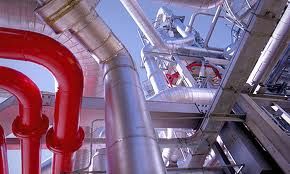
Asia's demand for natural gas may be insatiable and a case existed for the construction of at least a few more multi-billion dollar gas-export projects in Australia, says global consulting firm Bain & Co.
Amid a slowing down of China's economy, increasing cost pressures, and the potential emergence of competing natural gas supplies from North America and East Africa there had been concerns that Australia's liquefied natural gas, or LNG, sector was much too crowded.
Several projects, with a combined costing of over $175 billion are under construction along Australia's eastern and northern coastline, and had locked in long-term supply contracts with LNG buyers including the huge Chevron Corp-led Gorgon and Wheatstone developments in the state of Western Australia.
According to John McCreery, head of Bain's Asia Pacific Oil and Gas Practice who spoke to Deal Journal Australia, there was enough demand in Asia for all Australian projects. He said even projects still on the drawing board were further ahead than potential East African rivals he said.
With around 100 trillion cubic feet of natural gas already discovered in East Africa, the region was being talked about by experts as the next major liquefied natural gas export hub. According to global resources consulting firm Wood Mackenzie there was enough gas in Mozambique and Tanzania to support 16 LNG processing units, known as trains.
Based in Singapore, McCreery is currently in Perth advising project developers struggling with higher costs and mounting logistical and operational challenges.
He said the emergence of India as a potential natural gas customer and secondary Asian buyers including Malaysia, the Philippines and Thailand would underpin new projects for up to another decade. He said in the next five to 10 years there was a strong demand case for Asia and India might come to the fore, as its urbanisation was way behind that of China.
Although McCreery confirmed investors were nervous regarding cost pressure in the Australian LNG industry, he noted that energy prices had also improved since current projects under construction were sanctioned. In an example, oil prices had risen 60 per cent since Chevron and partners sanctioned the $37 billion Gorgon project in September 2009.
McCreery said most projects therefore were looking like they would yield higher rates of return and that was counteracting potential cost increases on the downside.
Meanwhile, there is talk of discovery of the world's biggest gas finds in a decade along Africa's east coast, casting a shadow over plans on the other side of the Indian Ocean.
Royal Dutch Shell, BG Group of the UK and France's Total might scale down projects for putting up liquefied natural gas export plants in Australia and switch to Tanzania and Mozambique, where the new prospects lay and would cost about half as much, according to analysts.
Australia's booming LNG industry, with $180 billion of planned investment set to make gas the country's fastest-growing export over the next five years, risked losing strength as labour and material shortages forced up building costs.
As energy companies considered the next $100 billion of projects, a switch to East Africa would hold back Australia's market share in China and India, where energy consumption was forecast to increase over 60 per cent by 2030.
Analysts say given the volume that had been discovered in East Africa, the economics looked to be able to challenge Australian LNG projects, given the cost inflation they had experienced. He said all companies would have that on their radar.
The Asian market for LNG accounted for about two-thirds of global demand and was projected to grow by 6 per cent a year this decade according to analysts. However, they say of the six Australian projects scheduled to reach investment decisions in 2013, few would be approved due to increasing costs.
Source: domain-B
We use cookies to improve your experience. By continuing to use our site, you accept our Cookies, Privacy Policy,Terms and Conditions. Close X